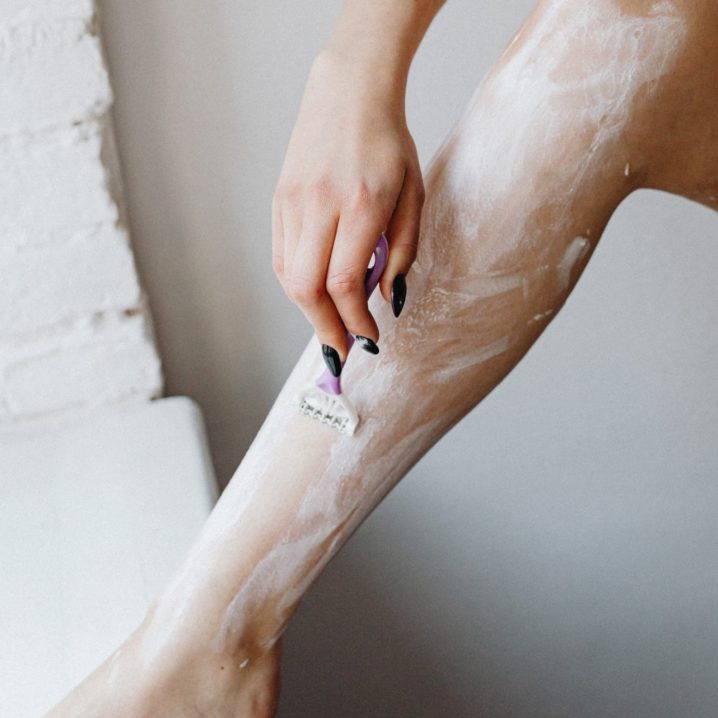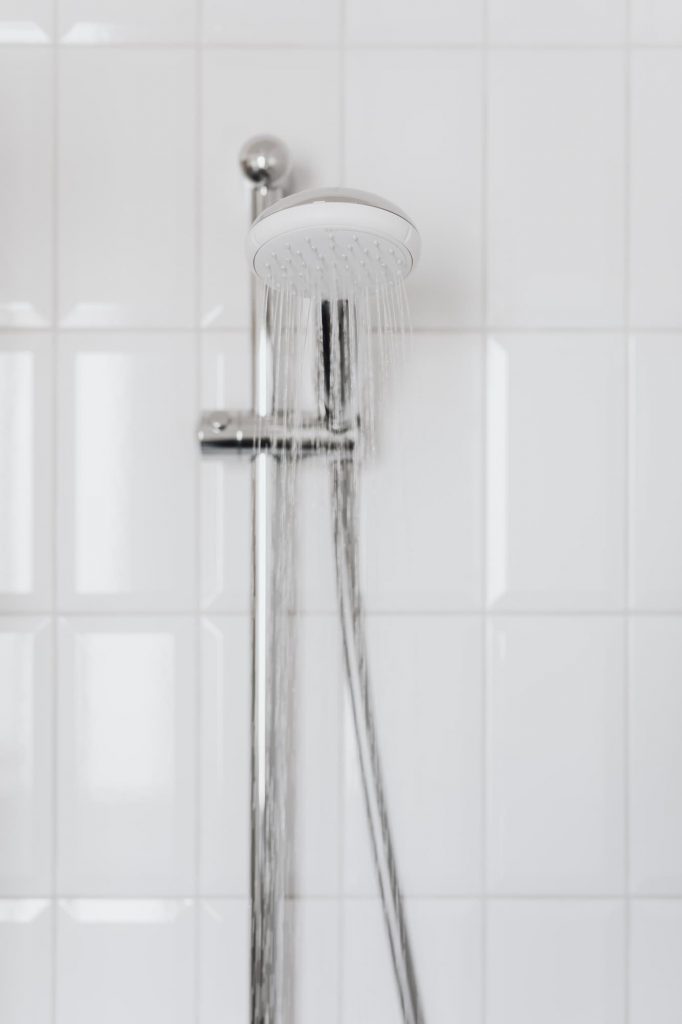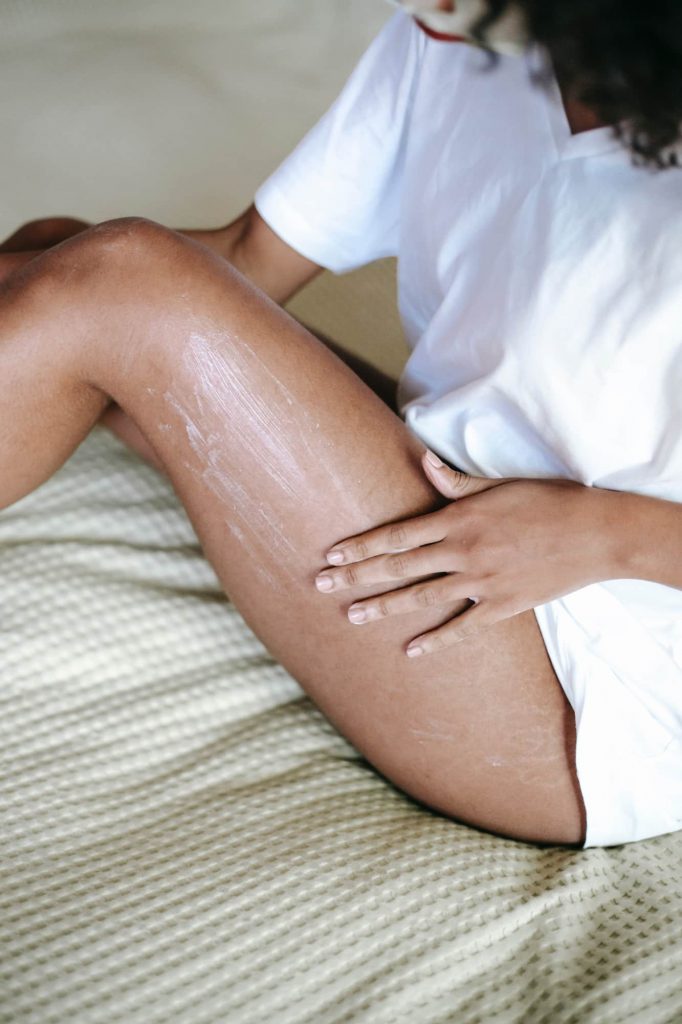
- POPSUGAR Australia
- Beauty
- How to Properly Treat Razor Bumps, According to the Experts
How to Properly Treat Razor Bumps, According to the Experts

If you believe the marketing, shaving is one of those everyday rituals that’s easy to take on. Yet, very few go into detail as to how it’s supposed to be properly performed. And let me tell you, doing away with hair anywhere on the body is no easy feat, from finding the perfect razor or shaving cream for your needs to taking steps that ensure your shave has longevity. Not to mention, the postshave burn and the occasional outcome of uncomfortable red bumps you might experience – especially along the delicate bikini line.
This is something I’ve seen firsthand: I’ve been an esthetician for over a decade and have experienced the latter myself while also treating razor bumps on my client’s skin. Although they are unfortunate, it’s very normal and fairly common. To better understand what those red bumps are, why they happen, and what to do about them, we spoke with board-certified dermatologist in New York City Marisa Garshick, MD. Keep reading for everything you need to know so you can finally say goodbye to shaving bumps – for good.
What Are Razor Bumps, and Why Do They Happen?
Razor bumps, medically known as pseudofolliculitis barbae, are ingrown hairs that develop after shaving or other hair-removal techniques, such as waxing or tweezing. “When the hair grows back, it curls back into the skin and can trigger inflammation,” Dr. Garshick says.
Although not always, in my professional experience as a master esthetician, this is a more common occurrence in those with curly and/or coarse hair and can appear on any area of the body someone might shave, from the face to the legs, bikini area, and even the underarms.
What’s the Difference Between Razor Burn and Razor Bumps?
While both instances might seem similar, they are not one and the same. “Razor burn refers to a skin irritation, which can be thought of as an irritant contact dermatitis,” Dr. Garshick says. This can appear as red, itchy patches on the skin as a result of friction between the razor blade and the skin, causing irritation on the skin. Although both are inflammatory responses, razor burn gives the appearance of a surface-level rash, whereas razor bumps are raised as a result of trapped hair beneath the skin. Shaving bumps may also carry a little pus inside, as you also sometimes see with ingrown hairs.
What to do Pre-Shave to Prevent Razor Bumps
The first thing you can do before shaving is to use lukewarm water while shaving that’s not too hot nor too cold. “It is generally recommended to use warm water as extremes of temperature can be irritating on the skin and it is known that water that is too hot water can lead to dryness and irritation of the skin,” Dr. Garshick says. Warm water also loosens the pores and softens the hairs, allowing for an easier shave, so consider shaving at the very end of your shower session.
Another great pre-shave tip that can be done to prevent razor bumps is to instill proper shaving techniques. Dr. Garshick suggests that you “shave in the direction of hair growth and make sure to always use a clean and sharp razor as dull blades can increase the potential for ingrowns and irritation.”
In my experience, using a sharp single blade is extremely helpful to prevent ingrowns and my go-to the Oui The People The Single Razor Blade. Another great single-blade razor Dr. Garshick recommends is the Gillette SkinGuard. “It’s specifically designed for sensitive skin and does a great job at keeping ingrowns at bay,” she says.
How To Treat Shaving Bumps
In the instance those shaving bumps have already popped up, the first way to treat (and eventually prevent) them is to moisturise. Your skin needs hydration to heal itself and treat such conditions, so using a calming non-comedogenic moisturiser, oil, or serum is vital. Garshick suggests regularly exfoliating with gentle acid pads to help, as it’s treating two problems at once. “I love First Aid Beauty Ingrown Hair Pads as they contain alphahydroxy acids and beta hydroxy acids as glycolic and salicylic acids to sloth away dead skin cells that traps hair beneath the skin and aloe vera to soothe and calm without stripping skin barrier.”
There are two products taking up a residency in my bathroom cabinet as they are my go-to’s at treating the inevitable razor bumps I get post shave. The first is the Oui The People Hydrating Bikini Sheets. It immediately calms inflammation and soothes my skin beautifully post shave and Fur Oil by Fur. It treats ingrowns and soothes skin day after day.
Lastly, it is important to avoid picking or squeezing at any razor bumps or ingrowns as this can increase the risk of scarring, worsening inflammation and infection. If it doesn’t improve, speak with a board-certified dermatologist to explore your treatment options.



